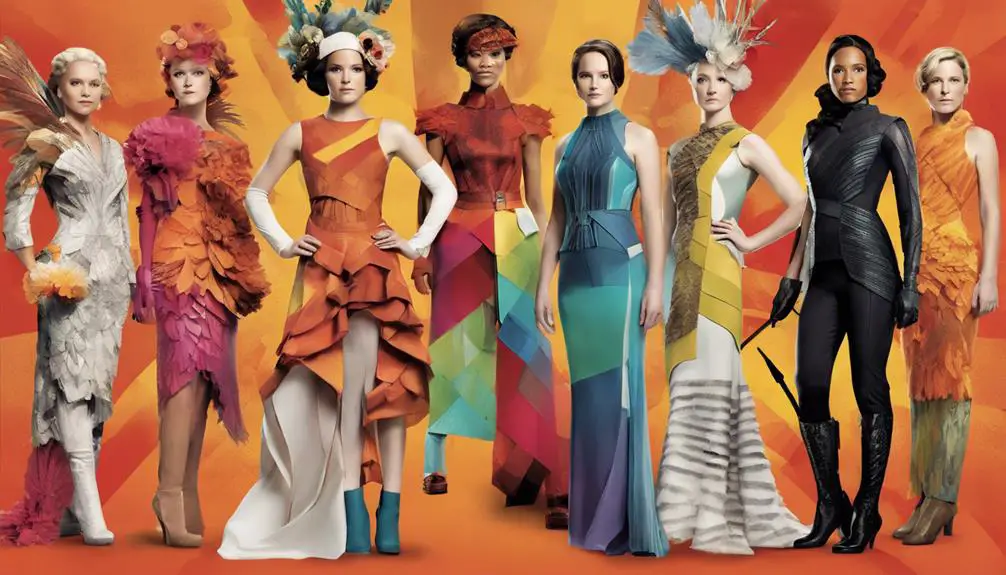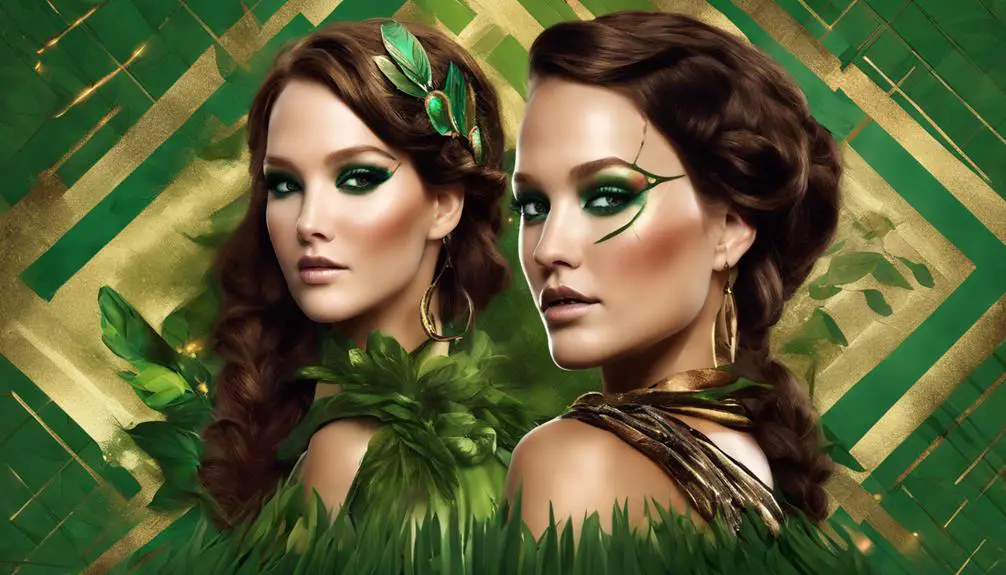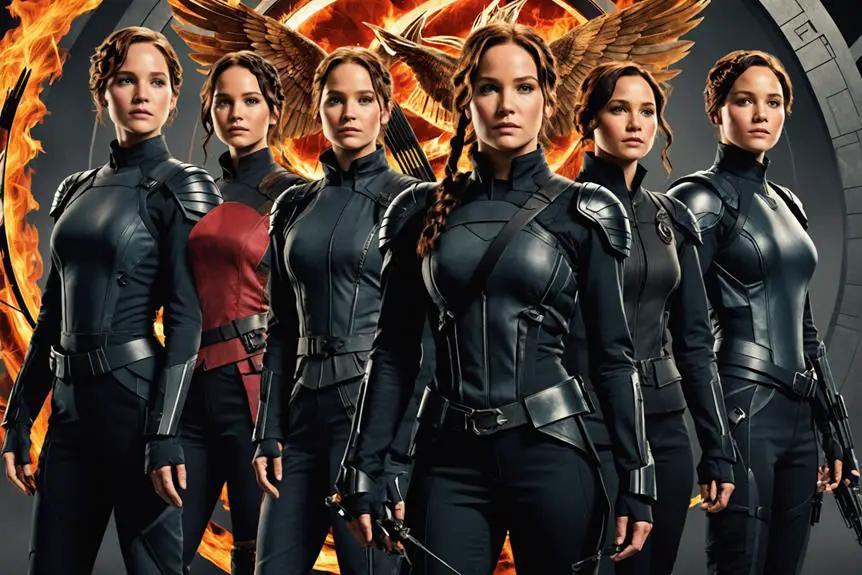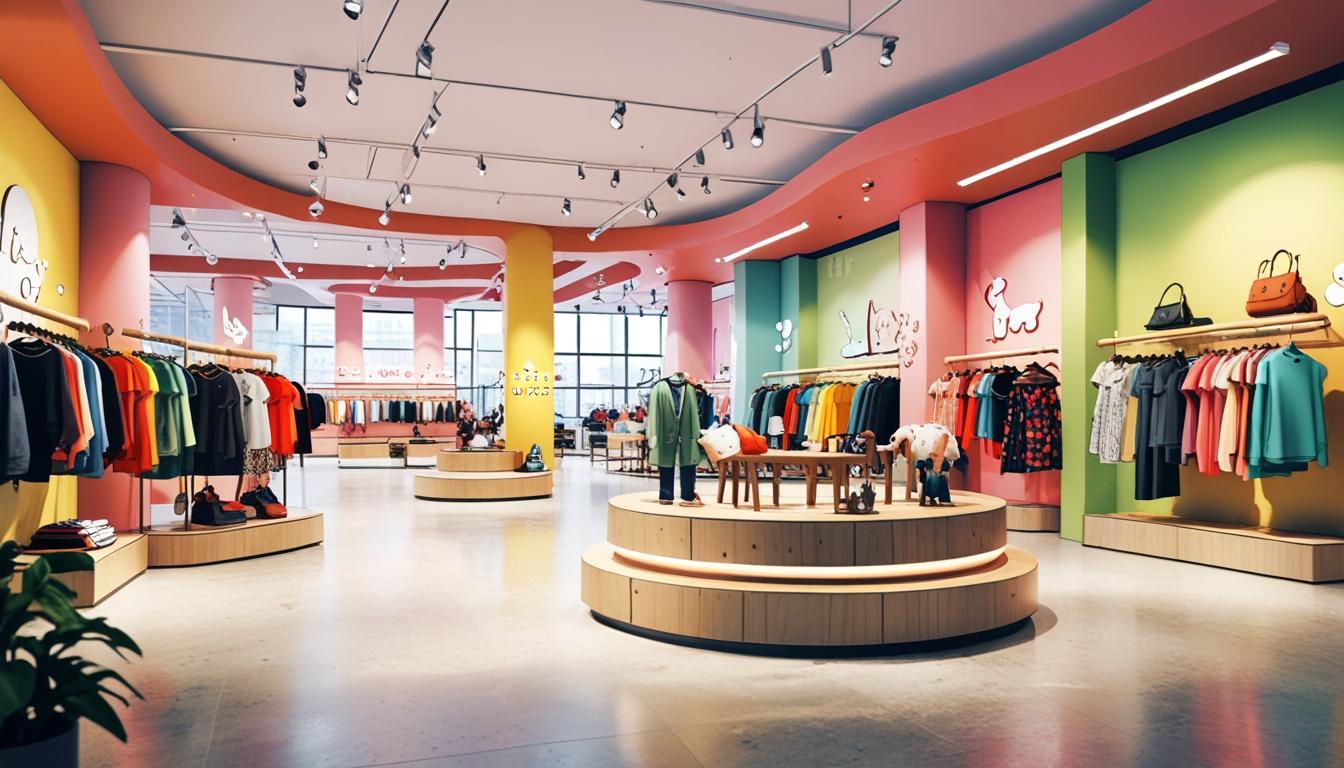When it comes to expressing one's individuality, the outfits in "The Hunger Games" series certainly make a statement. You might find it intriguing how costumes not only reflect the characters' personalities but also the broader social dynamics within Panem. From Katniss's fiery ensemble to the flamboyance of Capitol citizens, each piece serves a purpose beyond mere aesthetics. As we explore these designs, consider how they contribute to the narrative and what they reveal about the characters themselves. What might these outfits say about the struggle between conformity and rebellion?
Key Costume Designers

When diving into the world of "The Hunger Games," you'll quickly notice how the costumes play an essential role in shaping the narrative and character identities. The amazing work of costume designers like Judianna Makovsky and Trish Summerville brings the story to life in vibrant ways. Makovsky kicked things off by creating over 200 unique Hunger Games costumes, highlighting the stark contrast between the flashy Capitol and the gritty districts. You can really see this in outfits worn by characters like Katniss Everdeen and Effie Trinket.
Then, in "Catching Fire" and "Mockingjay," Trish Summerville took the reins. She infused the costumes with historical influences, like 1950s coal mining aesthetics, which gave District 13's combat uniforms a special edge. It's like history meets fashion, right? And let's not forget Lucas Hugh, who designed those striking reaping costumes for past victors in "Catching Fire." They blended high fashion with storytelling, showing how much a costume can say about a character.
In "The Ballad of Songbirds and Snakes," Summerville returned to create outfits that drew inspiration from post-WWII Americana. One standout piece is Tigris's pink skirt suit, which reflects both fashion trends and character growth. So, next time you watch the series, pay close attention to the incredible work these costume designers put in. It's not just about looking good; it's about telling a story!
Iconic Outfits From the Series
Costumes in "The Hunger Games" aren't just about aesthetics; they embody the spirit and struggles of the characters. Take Katniss's "Girl on Fire" dress from "Catching Fire," for example. Designed by Trish Summerville, it features a jaw-dropping transformation with flames that symbolize her fiery rebellion. When you see her in that costume, don't you feel a spark of hope for the districts?
Then there's Effie Trinket, who rocks a butterfly dress made of hand-painted feathers. This outfit screams Capitol excess and was a standout during the Victory Tour. It perfectly showcases her flamboyant fashion sense, right? Cinna's gold eyeliner and more understated outfits balance this extravagance, highlighting his authenticity and his deep connection to Katniss throughout the series.
And let's not forget Lucy Gray Baird! Her rainbow dress in "The Ballad of Songbirds and Snakes" isn't just colorful; it's designed for action. It reflects her vibrant personality and theatrical flair, making it one of the iconic outfits in the series.
Now, President Snow's maroon suit, complete with that signature rose lapel pin, is another classic. It visually represents his authority and sinister nature, becoming a chilling symbol of his character.
Each of these outfits tells a story, doesn't it? They help shape the world of "The Hunger Games" and make the characters unforgettable. What's your favorite outfit from the series?
Makeup and Character Transformations

Makeup plays an essential role in "The Hunger Games," transforming characters and enhancing their narratives. Think about it—this isn't just about looking good; it's about telling a story! The lead makeup designer, Sherri Berman Laurence, drew inspiration from the 1940s and '50s, using dirt, grime, and blood effects to capture the gritty reality the tributes face. How cool is that?
When you look at the Capitol citizens, their makeup is a whole different ball game. Techniques like bleaching and eyebrow shaping create striking contrasts to the District residents. It's like a visual feast! Take Dr. Volumnia Gaul, for example. Her heterochromia—two different colored eyes—makes her presence both unsettling and unforgettable, thanks to the talented Tamar Aviv.
Then there's Tigris Snow. Her kind demeanor shines through her fashion-forward style and distinctive makeup. It reflects her empathetic nature, which is so important in the story. And let's not forget Lucy Gray Baird. Her vibrant colors in performance makeup aren't just pretty; they tell a story about her character's connections to the Capitol.
These transformations make "The Hunger Games" more than just a story of survival; they're part of the visual storytelling that pulls you in. So, next time you watch, pay attention to how makeup shapes the characters and their journeys. It's all part of the magic!
Visual Themes in Costume Design
In *The Hunger Games*, visual themes in costume design vividly convey the stark differences between the Capitol and the Districts, enhancing the story's emotional depth. You can really see how the costume designer, Trish Summerville, uses color schemes to tell the characters' stories. The Capitol's outfits are bursting with vibrant colors, showcasing their excess and luxury. In contrast, the District costumes lean towards muted tones, highlighting the struggle and oppression faced by its people. It's like a fashion showdown between extravagance and survival!
Take Tigris Snow, for example. Her monochromatic costume emphasizes her unique beliefs, setting her apart from the Capitol's flashy style. Isn't it fascinating how much a color scheme can say about a character? And let's not forget Lucy Gray Baird! Her costumes are alive with vibrant colors and dynamic elements that reflect her artistic spirit, enhancing the visual storytelling throughout the film.
Each tribute's outfit is crafted with care to showcase their cultural identity. From the fabrics to the designs, these character costumes reveal their districts' backgrounds and socioeconomic struggles. It's like a visual history lesson wrapped in fashion!
Ranking Memorable Movie Costumes
The striking visual themes in *The Hunger Games* costume design lead us to some of the most memorable outfits in film history. When you think of these films, you can't help but picture Katniss in her iconic "Girl on Fire" dress, designed by Cinna. It's not just a dress; it's a fiery symbol of her transformation into a rebel leader, making it a top contender in any costume ranking.
Next up is Effie Trinket's butterfly dress from *Hunger Games: Catching Fire.* This outrageous outfit, made from hand-painted feathers, perfectly captures the Capitol's over-the-top extravagance. Seriously, who wouldn't want to wear a dress that looks like it's straight out of a fairy tale?
Don't forget Peeta Mellark's interview tuxedo, adorned with flame appliqués. It's a striking contrast to Katniss's fiery looks and shows how different their roles are in the annual Hunger Games.
And how about Tigris's pink skirt suit from *The Ballad of Songbirds and Snakes*? Inspired by Balenciaga, it reflects a unique blend of post-WWII Americana and Tigris's caring nature, making it both stylish and meaningful.
These costumes do more than just look great; they tell Katniss's story. So, which one's your favorite? Whether it's the fierce "Girl on Fire," the whimsical butterfly dress, or Peeta's flaming tuxedo, each outfit leaves a lasting impression.
Frequently Asked Questions
What Clothes Did They Wear in the Hunger Games?
In "The Hunger Games," you see Katniss Everdeen's fashion evolve, from District 12's muted attire to Capitol style's extravagance. Tribute costumes reflect their identities, while Peeta Mellark's wardrobe complements her rebellion, symbolized by the Mockingjay.
Why Do They Dress so Weird in the Hunger Games?
In the story, characters dress weirdly to showcase futuristic fashion and cultural influences. Their clothing symbolizes district differences, reveals personality, embodies rebellion motifs, and serves as emotional expressions, contrasting practical designs with extravagant styles.
Who Designed the Outfits in Hunger Games?
Who designed the outfits in The Hunger Games? You'll find a tapestry of costume inspirations, character symbolism, and fashion evolution, with designer collaborations weaving in color meanings and cultural references, enhancing thematic elements and audience impact throughout the films.
Which Hunger Games Movie Did Jennifer Lawrence Wear a Wig?
In "Catching Fire," you'll see Jennifer Lawrence's wig style enhance Katniss's character transformation. Behind the scenes, this choice guaranteed film accuracy, drawing hair inspiration from celebrity hairstyles, while fans praised its costume significance and impact.




